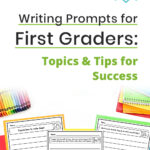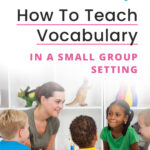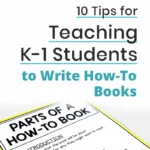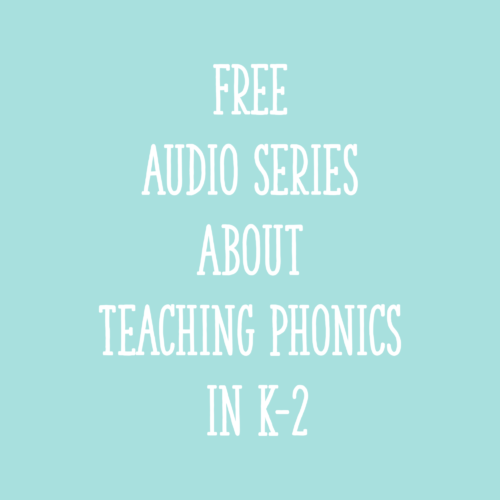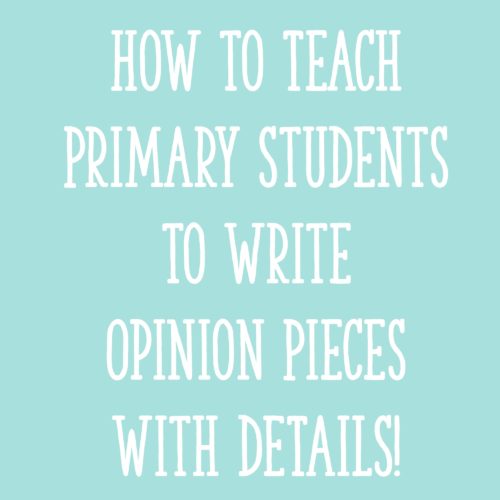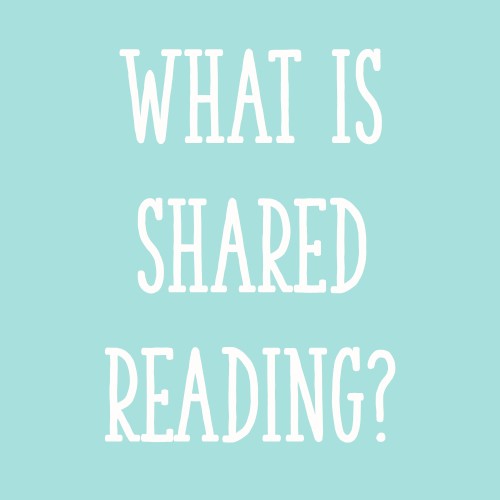Do first and second grade students need to learn the writing process? Yes! It’s important for kids to learn, from an early age, that writing is not a “one and done” activity. Understanding that there are steps in the writing process helps kids learn to take their time and make improvements to their writing.
Of course, getting first graders or second graders to understand and use the steps in the writing process is easier said than done! In this post, I’ll share how you can make the writing process easier for your young writers.
Choosing an Idea
Before kids begin to write, they need to choose an idea! Sometimes, you might give them something specific to write about ( a writing prompt), and sometimes you might let them have free choice or guided choice in what they write about.
Choosing an idea is step one, but this alone can be difficult for some kids!
As a support, you might guide them with a writing prompt like, “Write a story about a great day at school when you had a lot of fun.”
For even more support, you might give them some “starter ideas” as you can see in the graphic organizer below. I don’t always offer this much help, but if kids are struggling to get going on their own, this scaffold is very effective.
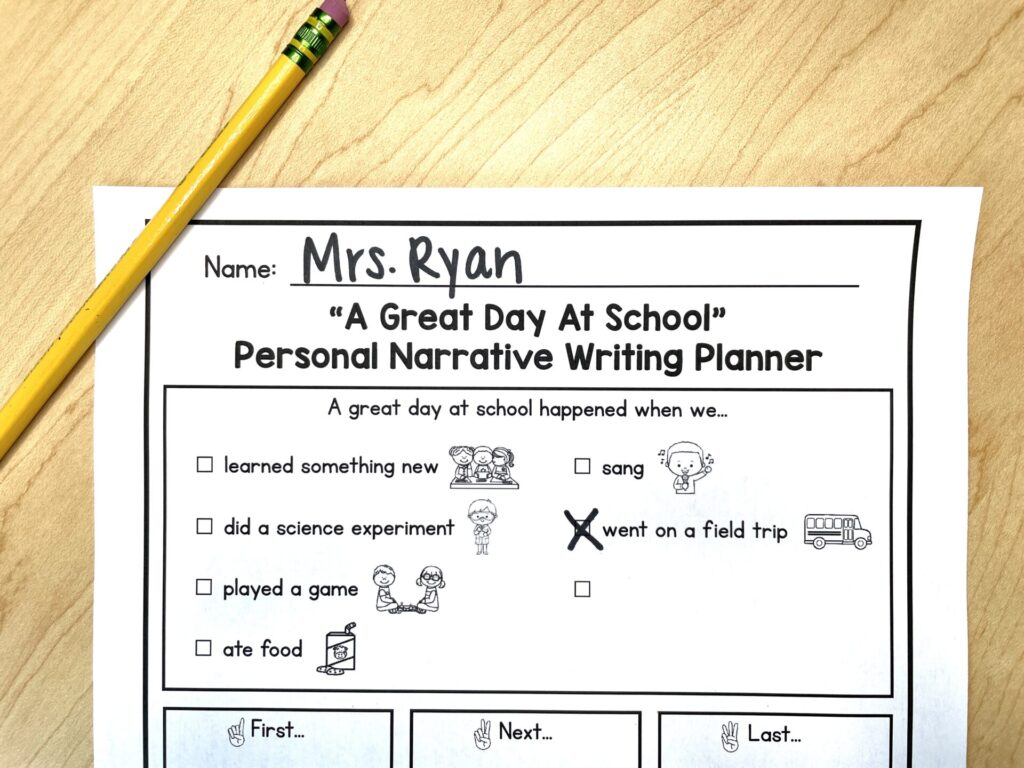
Planning
After students have an idea, should they begin writing? Not yet! It’s helpful for all writers to have a plan. Graphic organizers are a great way for students to draw and/or write their thoughts.
Coming back to the “a great day at school” narrative writing prompt example, students draw a picture about what happened first, next, and last.
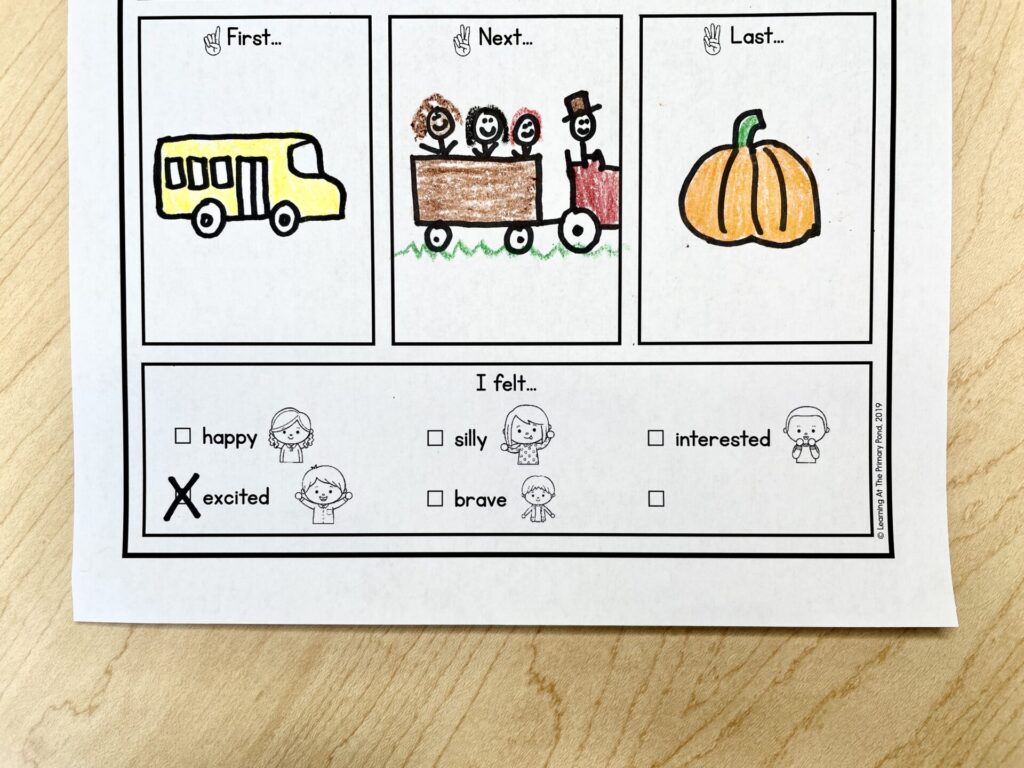
I also included a place where they would check off a “feeling word.” Many standards require students to include feeling words in their narratives. Having students write how they felt is also a great way to help them provide a sense of closure / write a conclusion for their personal narratives.
Drafting
By now, students will have chosen an idea and created a plan for their writing.

Now, it’s time for them to write a draft!
You will need to model all stages in the writing process, but this stage is especially important to model. You need to show students how to take their plan and turn it into sentences, with as much detail as possible.
It’s also helpful to have students talk to a partner to think through how they will turn their draft into a piece of writing.
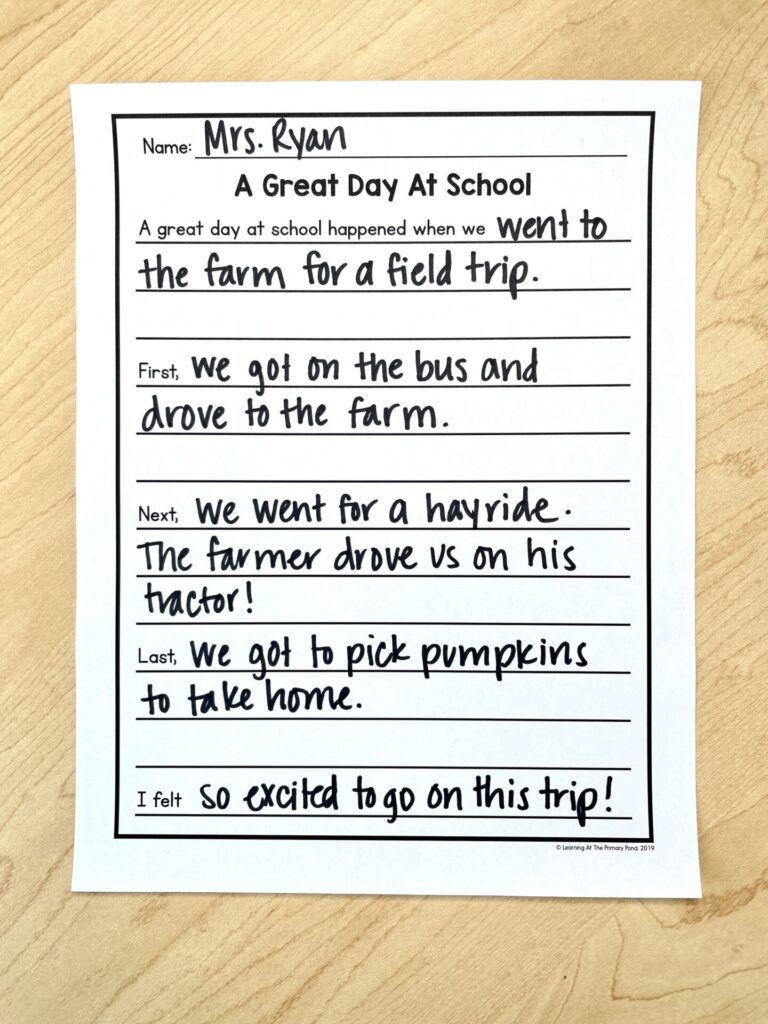
Revising
Revising is so hard for first and second graders! Revising means making significant changes to a piece of writing, like rearranging parts, adding more, or removing parts.
I model this process repeatedly throughout the year. I choose a specific revising strategy for each revising minilesson. For example, “Today I’m going to show you how to revise by adding more details about where your story took place” or “Today I’ll show you how to revise by cutting out parts that aren’t helpful for the reader.”
Editing
Editing is also tricky, because all writers (including adult writers) tend to become “blind” to their own mistakes! The best way that I’ve found to get first grade students and second grade students to edit is to implement partner editing.
Their partner can look at their work with “fresh eyes.” They can check that their partner has written in complete sentences, used correct punctuation and capitalization, and spelled words correctly.
Of course, I model and teach mini-lessons on editing, just like I do every other stage in the writing process! I also provide individual support to students to help them edit as part of our writer’s workshop.
Using Structured Graphic Organizers to Teach the Writing Process
My Structured Graphic organizers for K-2 are a great tool for supporting students through every stage of the writing process!
The example I showed you is for personal narrative writing. The set also includes prompts for having students complete informative writing / informational writing, as well as opinion writing. Multiple writing prompts for each genre are included.
Here are a few examples:

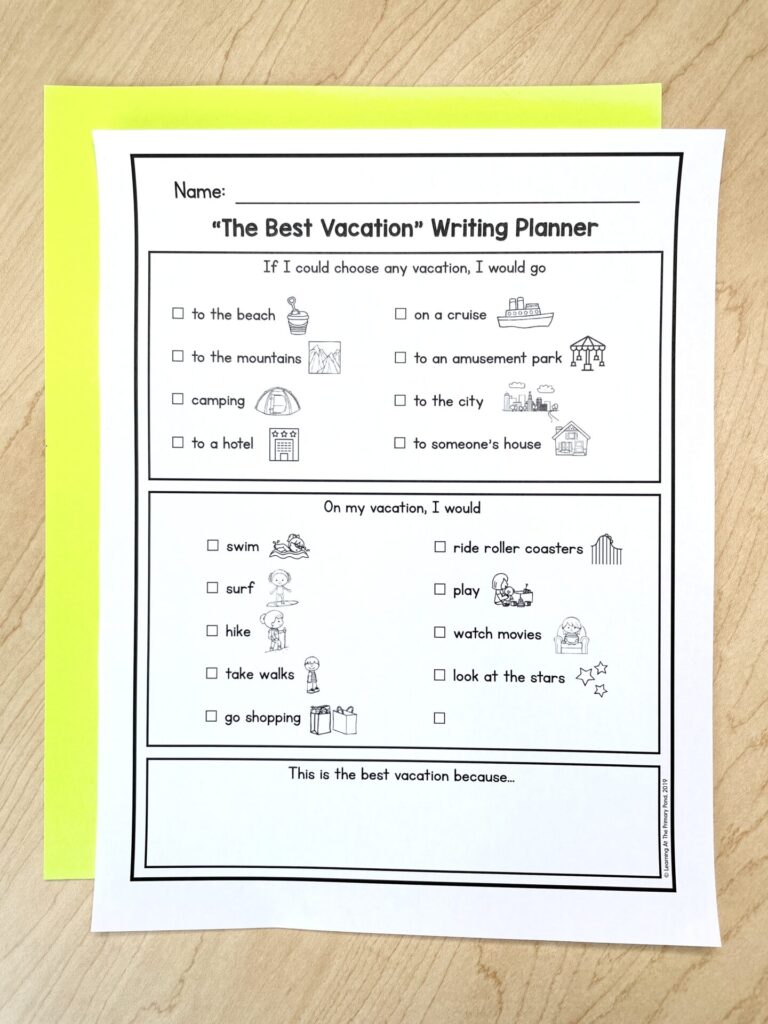
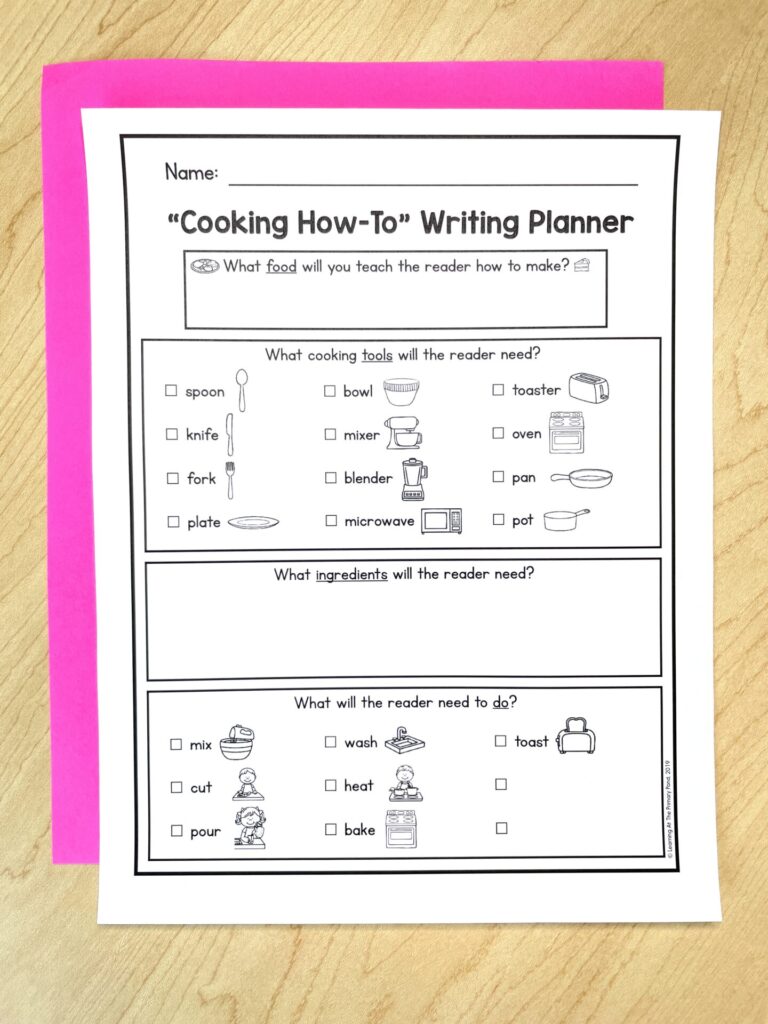
You can grab my Structured Graphic Organizers for K-2 here! They’re great for teaching the writing process to all students, and they’re especially helpful for reluctant writers or students who have special needs.
Save These Activities for Teaching the Writing Process!
If you’d like to come back to this post later, save it to your Pinterest account for the future!

Happy teaching!

